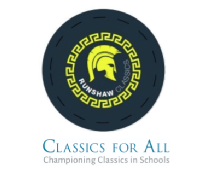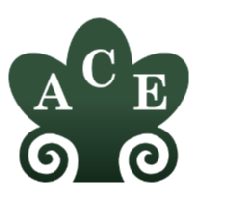Greek Religion (H408/31)
#AskAnAcademic: Prof. Michael Scott on Ancient Greek Religion Part One: Introduction
#AskAnAcademic: Prof. Michael Scott on Ancient Greek Religion Part Two: Festivals
#AskAnAcademic: Prof. Michael Scott on Ancient Greek Religion Part Three: Miasma
#AskAnAcademic: Prof. Zahra Newby on Mythology in Greek Art Part One: Introduction and Greece
A lecture and Q&A delivered to Runshaw College on 16/12/2020
#AskAnAcademic: Prof. Zahra Newby on Mythology in Greek Art Part Two: Beyond Greece
A lecture and Q&A delivered to Runshaw College on 16/12/2020
Recorded at our 2019 Class Civ Teachers Day, Prof. Michael Scott leads an entertaining talk on various aspects of Greek Religion including: 'Belief in the Gods', with reference to Herodotus, Xenophon and Theophrastus, Dodona Tablets; 'Personal, Local and PanHellenic Religion' with reference to a Sacred Law from Cyrene RO, 2007, 97); and 'Personal experience of the Divine' through reference to the healing texts at Epidauros.
OCR Greek Religion A-level Syllabus Pieces
 Francesca Grilli from Runshaw College is creating these amazing videos on every piece of art in the OCR Greek Art A-level syllabus and allowed us to use them as part of the WCN/Classics for All resource collaboration.
Francesca Grilli from Runshaw College is creating these amazing videos on every piece of art in the OCR Greek Art A-level syllabus and allowed us to use them as part of the WCN/Classics for All resource collaboration.
Each video focuses on one artwork from the syllabus and provides a detailed analysis of its background, importance and place within Greece's artistic tradition. Francesca is Course Leader for Classics at Runshaw College in Leyland.
For more info about Runshaw Classics follow them on Twitter @RunshawClassics, Instagram, or subscribe to their Youtube Channel.
AIE resources illustrate the relevance of ancient Athenian inscriptions, especially those of the classical period (the fifth and fourth centuries BC, c. 500-300 BC), to pre-18 education in the UK and beyond. They aim to support teachers who wish to introduce inscriptions into their teaching as a way of captivating their students’ imagination and fostering enthusiasm for the ancient Greek world.
These resources, consisting of teachers’ notes and slides for classes, underline the textual and visual potential of inscriptions for those engaged with learning about ancient Greek history and civilisation. The idea of an inscription being carved and read “in real life” is a way of fostering the curiosity of students about the past. Accordingly, through inscriptions, learners benefit from the bringing to life of the ancient world, perhaps in a way that helps it seem less abstract and initially less complicated. At the same time, they hope that introducing students at pre-18 level to inscriptions will encourage them to explore ancient source material of their own accord, and will help them to ‘bridge the gap’ into University study if they chose to pursue it. In their Introduction to AIE for Teachers resource you will find more ideas about using inscriptions in the classroom. They also offer a set of slides which introduce learners of all ages to Greek inscriptions: see Introduction to ancient Athenian inscriptions.
ACE Teaching Resources

Here at WCN we are proud of our association with ACE (Advocating Classics Education) and are pleased to be able to host their teaching resources here on the WCN site.
As part of their Classical Civilisation Teachers Summer School, held at King’s College London, ACE has prepared a series of introductory talks, delivered by leading academics and tailored specifically for the GCSE and AS/A-level Classical Civilisation syllabi.
The resources here are divided according to syllabus, but you can find the complete teacher resources from ACE and their Class Civ Teachers events via this link. You can find out more about the remarkable work of ACE on their dedicated website.

